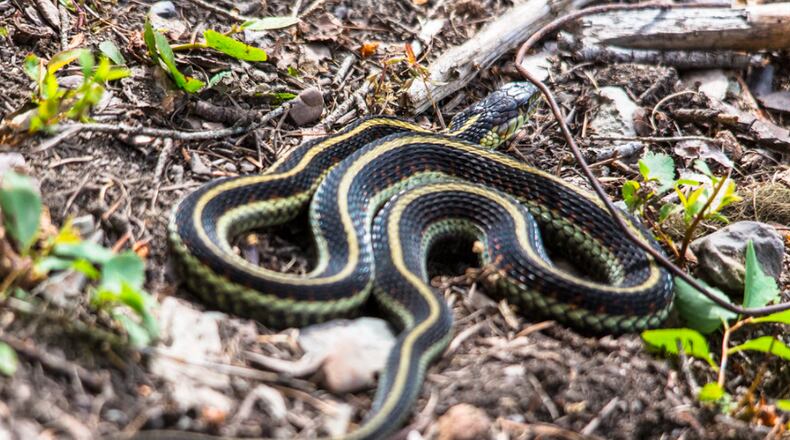An Augusta woman thought she would tidy up a little before going to bed by picking up some fuzz on the floor, but she got more than she bargained for.
Trish Wilcher “went to reach for it, and it moved,” she told news outlet WJBF.
Wilcher noticed something nestled underneath her bed Sunday night in her Tanglewood home.
“And then a second later another piece moved, and I went to my husband, ‘We have snakes!’”
The family found 17 babies which had recently hatched and the mother snake, WJBF reported.
Wilcher’s husband Max took a grabber tool and put each garter snake in a linen bag.
“He brought them out there to the creek area and released them there,” Trish told WJBF.
The family completed relocating the harmless snakes about midnight, WJBF reported.
Snakes are more active in the summer, and some are looking for places to lay their eggs.
There might be another reason they are drawn indoors, though, according to an expert.
“If you have a mouse problem, the snakes are going to come and try to help you with that,” Camilla Sherman, the Phinizy Center for Water Sciences environmental educator, told WJBF. “In the winter, when it’s cold, they slow down because their body is not able to produce heat like ours is,” she said. “So, in the summertime they’ve got plenty of heat. They are a lot more active, so you’re more likely to see them.”
Snakes rattle many people, but in Georgia they are more than likely to be non-venomous.
Bites are down slightly, WJBF reported, with Augusta University Medical Center’s Emergency Department reporting spikes during the summer.
“If you give them a way out, they’re going to take it. They’re not going to chase you,” Sherman told WJBF.
“If you have a mouse problem, the snakes are going to come and try to help you with that. In the winter, when it's cold, they slow down because their body is not able to produce heat like ours is. So, in the summertime they've got plenty of heat. They are a lot more active, so you're more likely to see them."
You can spot many venomous snakes by the shape of their head, which is triangular shaped due to venom sacs, and its thin, black, vertical pupils, similar to cat eyes, Sherman told WJBF.
Some venomous snakes, such as the coral snake, do not have diamond-shaped heads.
According to National Geographic, though coral snakes’ venom is highly toxic, no deaths from coral snake bites have been reported in North America since the late 1960s, when antivenin was developed.
The coral snake rhyme varies, but the general premise is the same: Red touch black, safe for Jack. Red touches yellow, kills a fellow. The coral snake will have bands of red touching smaller bands of yellow. It is uncommon to find a coral snake.
The Wilchers said they called a wildlife catcher for extra help. No additional snakes were found, WJBF reported.
About the Author
Keep Reading
The Latest
Featured


